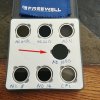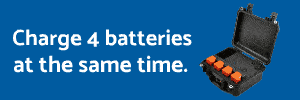NDs not needed for general photo work. Just set exposure.
For video use the one that will get your exposure right with the shutter speed close to twice the frames per second your shooting at. Generally bright sun will call for the 16ND, overcast but not too dark the 8ND, even less light the 4ND or none at all.
I think this is a good recommendation. To elaborate on the frame rate vs shutter, if you are shooting 4k at 60 fps, you want your shutter speed to be 1/120. If you shoot 30 fps, you ideally want the shutter at 1/60, shooting at 120fps you want the shutter as close to 1/240 as possible.
One thing I found when starting with a new drone, take off with your video resolution and frame rate set at what you want, say 4k-60 as an example, aim your camera at what you want to shoot with the camera set on auto and see what shutter speed it uses. Land, throw on an ND filter and try it again and see what it sets the shutter speed at, and repeat with a different ND until you get the shutter speed where you want it. This will give you an idea of the proper conditions for each ND, and it will get you close in terms of dialing in your drone.
You may want it a little darker or lighter than what the drone does on auto, but the Evo is generally pretty good at getting close. This is a good starting point for you. Then experiment and go from there and start setting things manually. Read lots of articles, practice, and you'll get the hang of it. You will begin to notice things better and get a better idea of how to best dial in your settings. You will notice things like it will want to underexpose snow and overexpose dark fields, and you'll already know which way to move your settings.
Whether you're shooting video with a drone or with a big ENG camera on the ground, the more you shoot, the better a feel you get for the equipment. And ask questions when you have them. The Evo is small, portable, and very affordable, but is very capable of getting amazing video the more you use it.
Once you get better with the camera, you'll probably have spent some time in post and be getting better with editing software as well, and things like color grading, and you'll want to try shooting in the log format. Never stop learning and experimenting.





